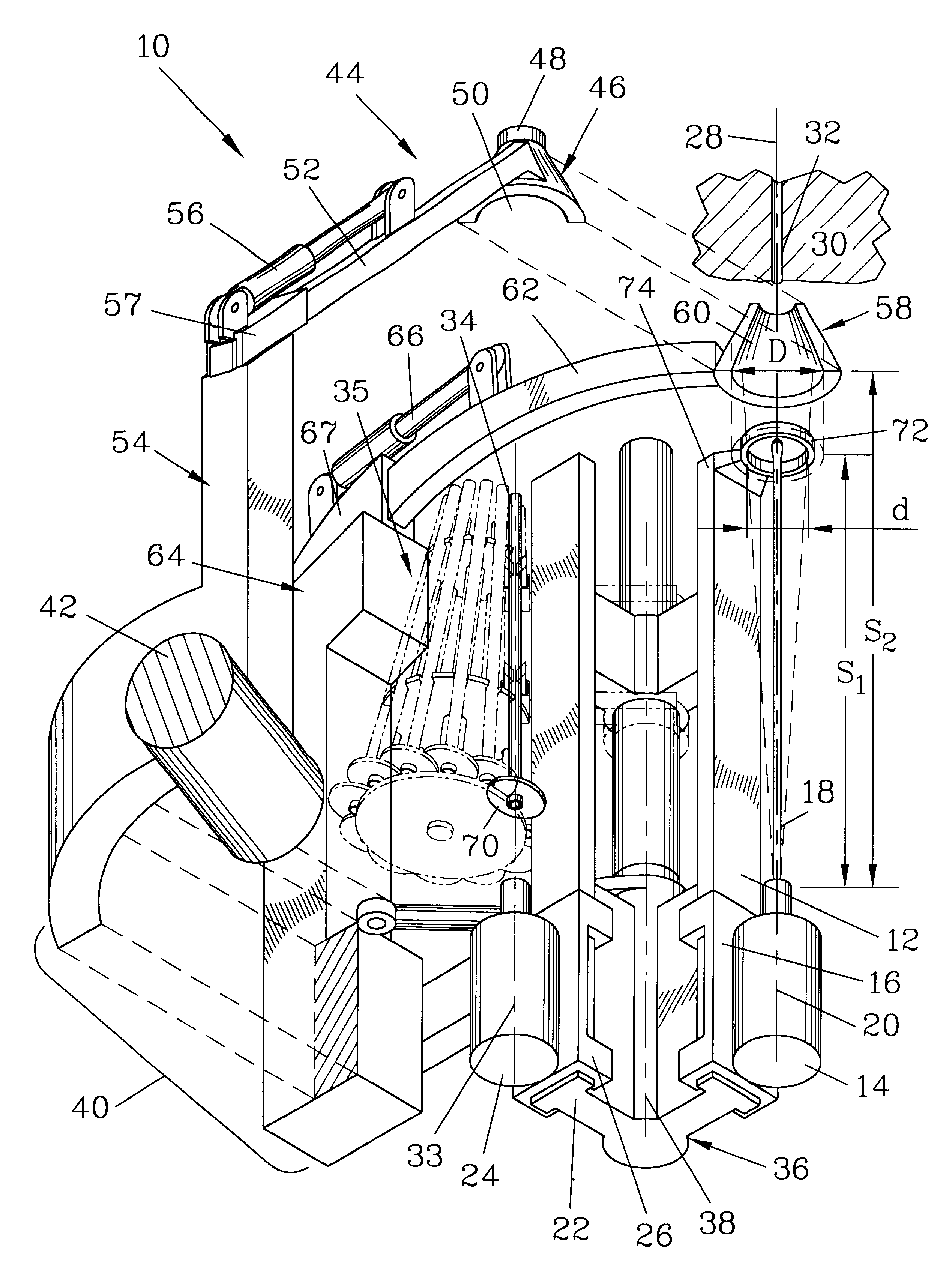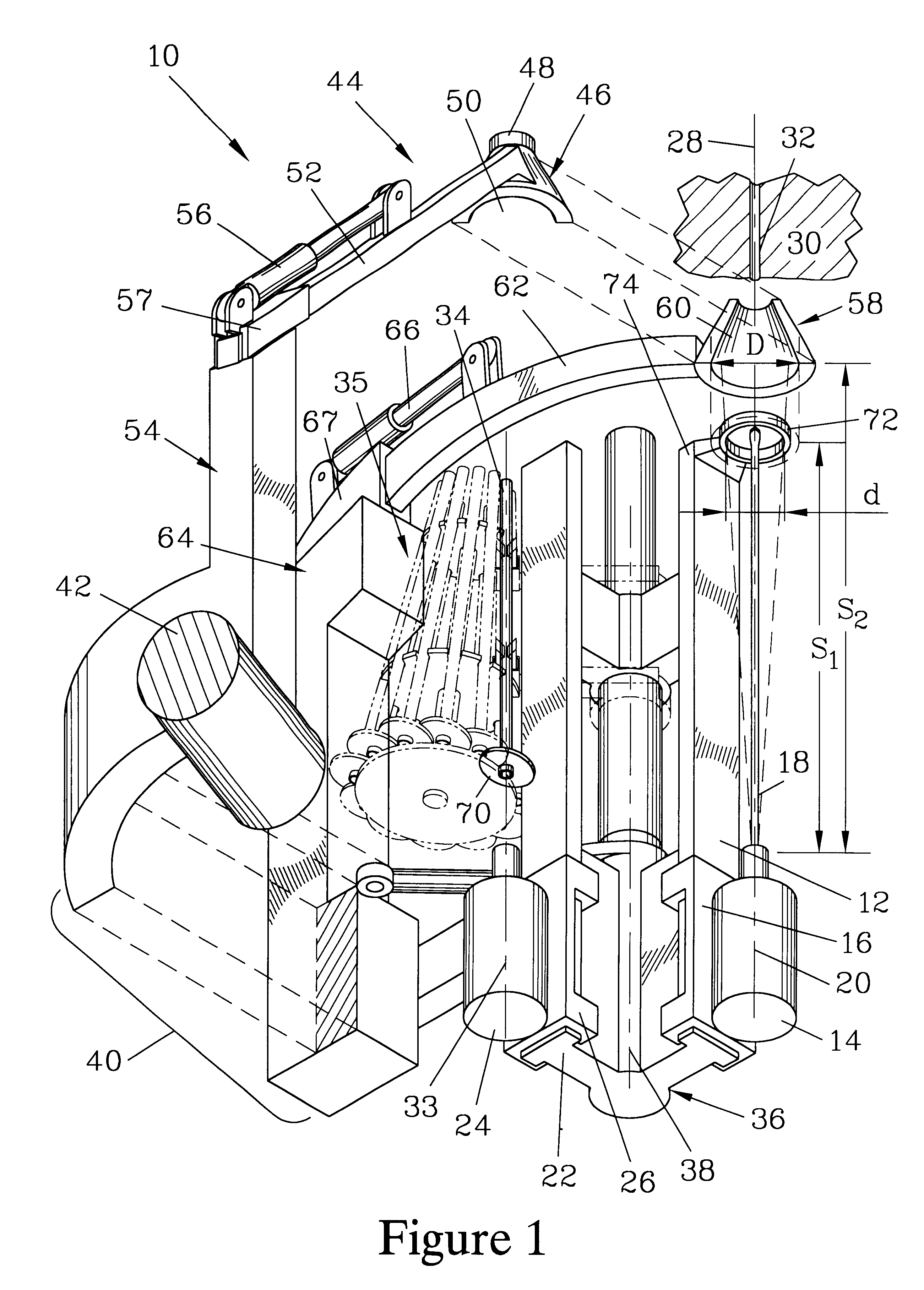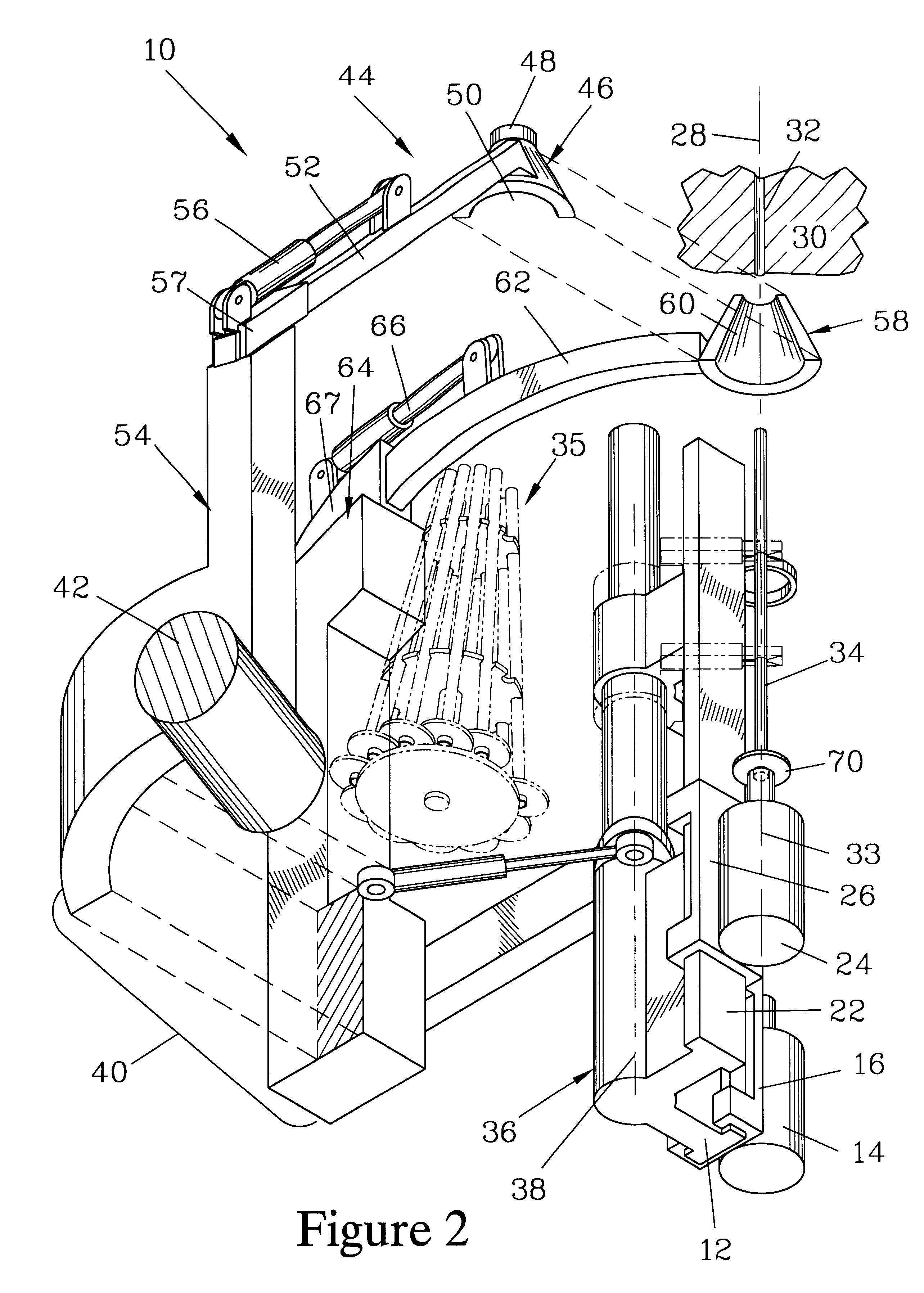Turret rock bolter with stinger/centralizer
- Summary
- Abstract
- Description
- Claims
- Application Information
AI Technical Summary
Benefits of technology
Problems solved by technology
Method used
Image
Examples
Embodiment Construction
FIGS. 1 and 2 are partially exploded isometric views of one embodiment of a rock bolter 10 of the present invention. Both views illustrate a drill feed track 12, along which a drill 14 mounted on a drill carriage 16 can be slidably advanced. The drill 14 is fitted with a drill steel 18 (shown in FIG. 1) which is substantially aligned with a drill axis 20. Also shown in both views is a bolt driver feed track 22, along which a bolt driver 24 mounted on a bolt driver carriage 26 can be slidably advanced. FIG. 1 illustrates the rock bolter 10 with the drill feed track 12 in a work position where the drill steel 18 and drill axis 20 are aligned with a work axis 28 along which the drill steel 18 is advanced into a rock surface 30 to drill a bolt hole 32. FIG. 2 illustrates the rock bolter 10 in its alternate position where the bolt driver feed track 22 is in the work position, where a bolt driver axis 33 of the bolt driver 24 is aligned with the work axis 28. When so positioned, the bolt ...
PUM
| Property | Measurement | Unit |
|---|---|---|
| Stability | aaaaa | aaaaa |
Abstract
Description
Claims
Application Information
 Login to View More
Login to View More - R&D
- Intellectual Property
- Life Sciences
- Materials
- Tech Scout
- Unparalleled Data Quality
- Higher Quality Content
- 60% Fewer Hallucinations
Browse by: Latest US Patents, China's latest patents, Technical Efficacy Thesaurus, Application Domain, Technology Topic, Popular Technical Reports.
© 2025 PatSnap. All rights reserved.Legal|Privacy policy|Modern Slavery Act Transparency Statement|Sitemap|About US| Contact US: help@patsnap.com



